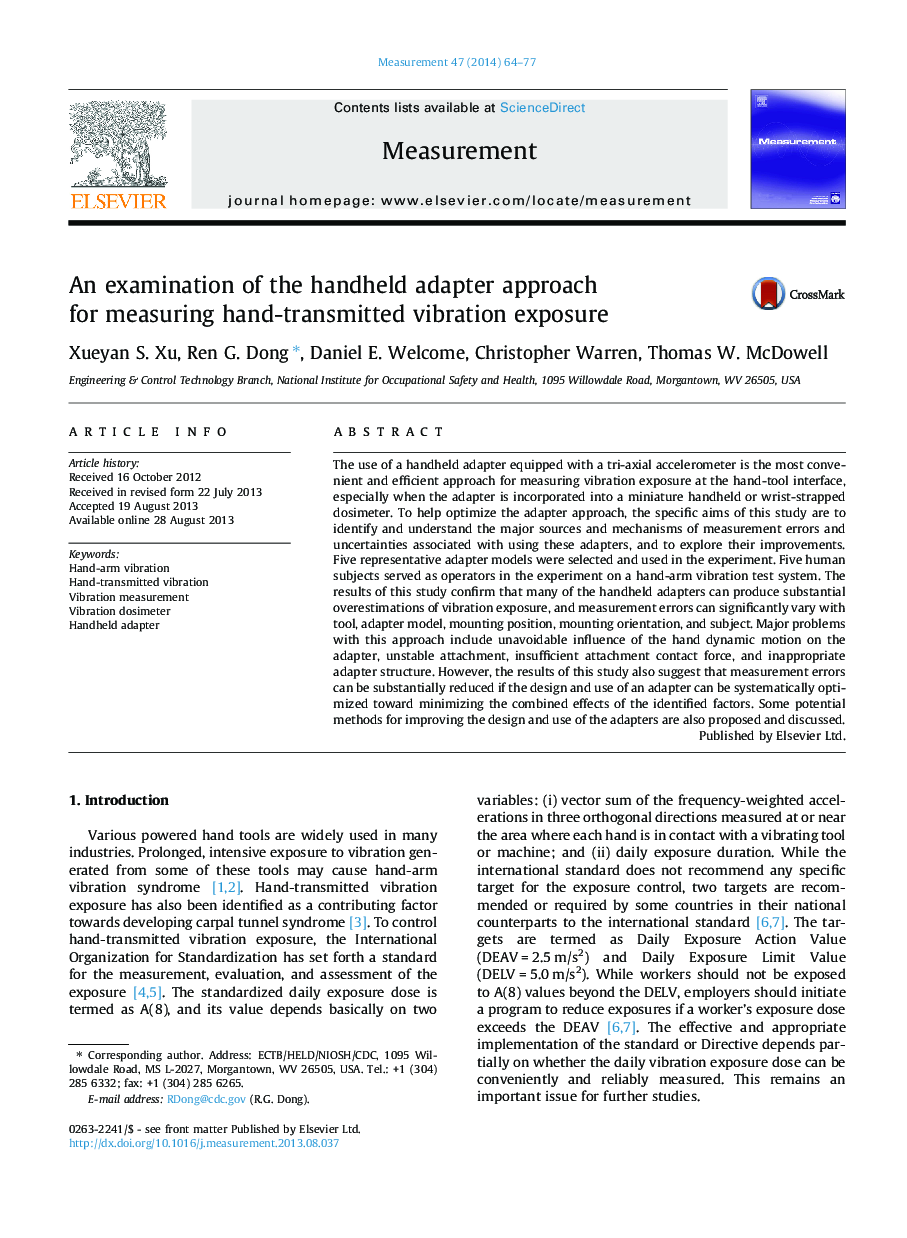| Article ID | Journal | Published Year | Pages | File Type |
|---|---|---|---|---|
| 7125995 | Measurement | 2014 | 14 Pages |
Abstract
The use of a handheld adapter equipped with a tri-axial accelerometer is the most convenient and efficient approach for measuring vibration exposure at the hand-tool interface, especially when the adapter is incorporated into a miniature handheld or wrist-strapped dosimeter. To help optimize the adapter approach, the specific aims of this study are to identify and understand the major sources and mechanisms of measurement errors and uncertainties associated with using these adapters, and to explore their improvements. Five representative adapter models were selected and used in the experiment. Five human subjects served as operators in the experiment on a hand-arm vibration test system. The results of this study confirm that many of the handheld adapters can produce substantial overestimations of vibration exposure, and measurement errors can significantly vary with tool, adapter model, mounting position, mounting orientation, and subject. Major problems with this approach include unavoidable influence of the hand dynamic motion on the adapter, unstable attachment, insufficient attachment contact force, and inappropriate adapter structure. However, the results of this study also suggest that measurement errors can be substantially reduced if the design and use of an adapter can be systematically optimized toward minimizing the combined effects of the identified factors. Some potential methods for improving the design and use of the adapters are also proposed and discussed.
Related Topics
Physical Sciences and Engineering
Engineering
Control and Systems Engineering
Authors
Xueyan S. Xu, Ren G. Dong, Daniel E. Welcome, Christopher Warren, Thomas W. McDowell,
